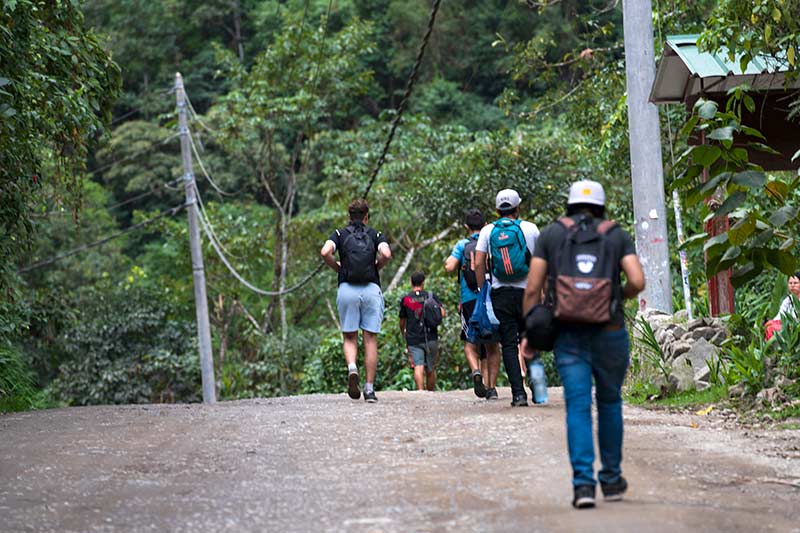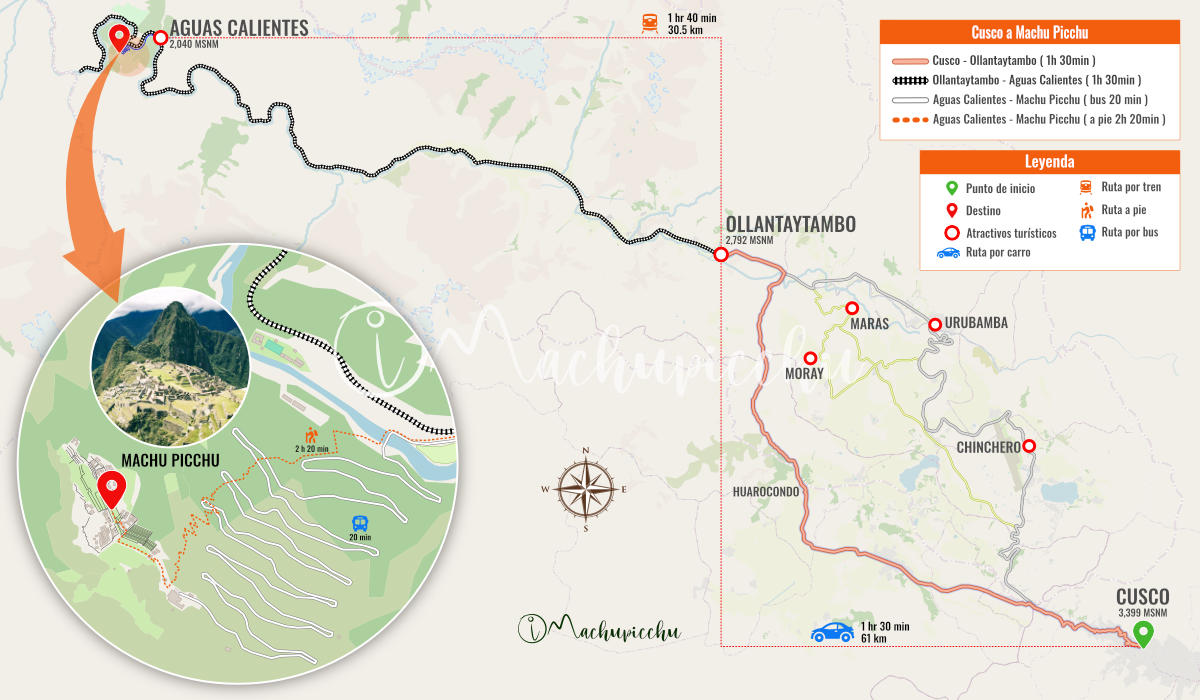Machu Picchu: Are there protests in Peru?
Social protests are not alien to Peru’s reality in South America. They tend to happen from time to time, even every two or three years. They have repercussions throughout Peru, including the Cusco region, the most touristic region of the country. Thus, the roads leading to Machu Picchu are blocked, preventing the free transit of visitors to the archaeological site. What to do when a social protest happens on the way to Machu Picchu? Know some answers to get ahead in the visit to the Wonder of the World.
- When are the visits to Machu Picchu? Is it open all year round?
- Are there protests in Machu Picchu? What are the most common cases?
- Protests and routes that lead to Machu Picchu
- What to do in case of protests in Machu Picchu?
- Other cases of emergencies in the visit to Machu Picchu
- Questions and answers about protests in Machu Picchu
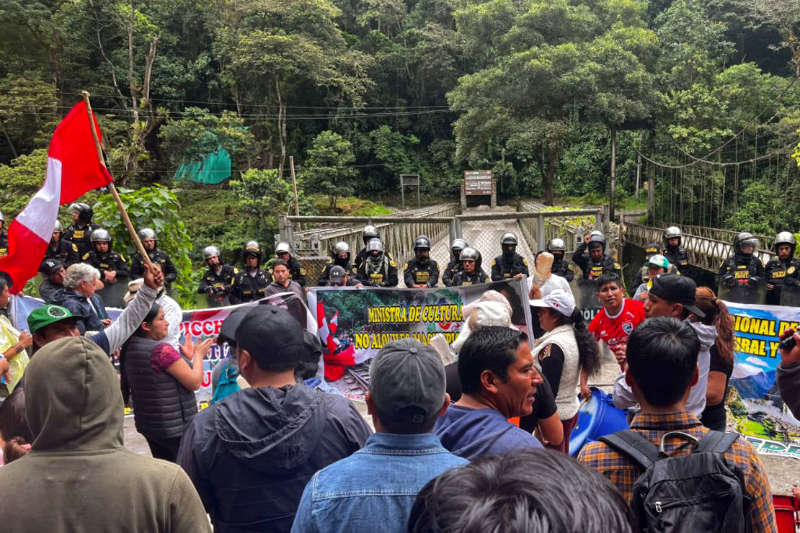
Protestors near the Machu Picchu archaeological site
Natural disasters, causes of Machu Picchu’s temporary closure
Although Machu Picchu does not close its doors any day of the year, some special cases may cause the temporary closure of the tourist visit. The most common causes are social protests by social groups such as workers, teachers, students, farmers and transporters. However, natural disasters can also cause the temporary closure of the archaeological site. The most common cases are heavy rains that cause rocks or mud to fall on the road leading to Machu Picchu. These landslides can occur every year, especially during the rainy season (January, February and March). The solution usually takes a few hours or two or three days.
When are the visits to Machu Picchu? Is it open all year round?
The hours of tourist visits in Machu Picchu are every day without exception from 6 in the morning until 5 in the afternoon. The Inca city does not close its doors even on Sundays or holidays in Peru.
Its Inca constructions are also available from 6 a.m. to 5 p.m. with no exceptions. Only the mountains of Machu Picchu have specific entrance hours according to the ticket you chose.
For example, Huayna Picchu mountain is available to tourists from 8 am to 11 am. Machu Picchu mountain, from 8 am to 10 am. Huchuy Picchu mountain, from 12 pm to 2 pm. The Intipunku from 8 am to 12 pm. The Temple of the Moon (Great Cavern), from 8 am to 11 am. And the Inca Bridge from 8 am to 11 am.
The rest of the buildings and temples are available from 6:00 am to 5:00 pm. No tourist can visit outside these hours.
Only the trekking route to Machu Picchu known as the Inca Trail closes its doors to tourists during the whole month of February. This is due to heavy rains.
Are there protests in Machu Picchu? What are the most common cases?
In Peru, social protests may occur due to the country’s situation, mainly due to cases of corruption, unemployment, low salaries in unions and citizen insecurity.
Social protests include measures such as marches, transportation stoppages and road blockades. The latter measures may result in the closure of roads leading to Machu Picchu.
The most common routes to Machu Picchu include the road linking Cusco with Ollantaytambo where you take the final train to the Inca city. Finally the Hiram Bingham road block, which links the route from Aguas Calientes to Machu Picchu.
These are the most frequent cases of social protests in Peru:
- Protests by workers’ unions in Peru – Low salaries of workers’ unions cause workers to take to the streets to protest for their rights. Protests include marches to government headquarters in major cities such as Lima and Cusco. These protests usually last between 1 to 2 days. They include measures such as road blockades on the way to Machu Picchu.
- Teacher Protests – The low salaries and work regimes of Peru’s teachers cause them to protest with demonstrations and marches to governmental headquarters in the main cities of the country (including Cusco). These protests usually last only 1 day.
- Farmers’ protests – Low prices for agricultural products and the government’s lack of interest in improving formalization have led farmers in Peru to protest for improvements in their work. Farmers often march to government headquarters in major cities. Their actions include road blockades to important sites such as Machu Picchu.
- Student protests – Students, mainly from state universities, often protest in support of other unions such as workers, teachers, farmers or transportation workers. Student protests are usually peaceful and do not block roads.
- Protests by transporters – Transporters often protest against the government for the high cost of fuel and the high cost of tolls on the country’s main roads. Protests usually take place on Peru’s main roads, including the route linking Cusco to Ollantaytambo. There they usually block the roads preventing the passage of visitors to the Inca city of Machu Picchu.
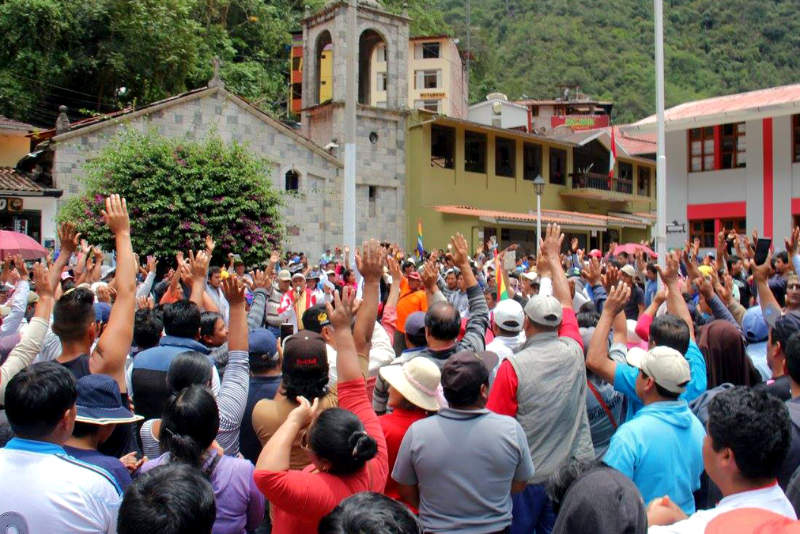
Protestors in Machu Picchu town – Aguas Calientes
Protests and routes that lead to Machu Picchu
Protests often include marches and blockades of Peru’s main roads and highways. This is how the tourist is prevented from reaching Machu Picchu. These are the roads that the visitor needs to cross to get to Machu Picchu:
- The route from the city of Cusco to the town of Ollantaytambo – The town of Ollantaytambo is 61 kilometers by road from the city of Cusco. The route includes passing through Andean towns such as Chinchero and Urubamba. The trip takes on average 1 hour 40 minutes. You can take private tourist transport, cabs or public transport. These are taken at Pavitos street and cost 12 soles. The tour to Machu Picchu already includes the trip by this land route.
- The train route from Ollantaytambo to Aguas Calientes – The town of Ollantaytambo is located about 40 kilometers from the town of Aguas Calientes, also called Machu Picchu village. This route cannot be done by land transport, only by train. The only trains that operate this route are Peru Rail or Inca Rail services. The trip takes 1 hour 40 minutes on average. The cost varies from 12 soles (for Peruvians to 50 dollars for foreigners). The tour to Machu Picchu 1 day already includes the train ticket.
- The bus route from Aguas Calientes to Machu Picchu – The bus route from the town of Aguas Calientes to the gate of Machu Picchu is the final leg of the trip. It is a bus route of only 10 kilometers uphill through the mountainsides. Because of this short distance, one option is to do the route on foot. The hike takes 2 hours on average. The bus ride takes 30 minutes. The cost of the bus ticket is 12 dollars on average. The bus ticket is already included in the Machu Picchu 1 day tour.
What to do in case of protests in Machu Picchu?
These are some recommendations in case of protests in Machu Picchu:
- If you booked a tour to Machu Picchu, contact your tour agency. Usually, agencies organize early morning departures, when there are no road blockades. If the protests are very hostile, they can arrange a change of tour date or cancellation with a full or partial refund of the cost of the service.
- If you purchased your entrance ticket to Machu Picchu and are looking to go on your own, you can also opt for the option of leaving very early to Machu Picchu. The authorities are more flexible with respect to the schedules of entry and exit of the Inca city. The same goes for train tickets.
- If you are looking for more security on your trip to Machu Picchu you can also choose to leave a few days before your itinerary heading to the town of Aguas Calientes. This town is located only 10 kilometers from Machu Picchu so you will have no problem going up by bus or walking to the archaeological site. Many tourists, in cases of protests, decide to spend more days in this town that has good tourist services.
Other cases of emergencies in the visit to Machu Picchu
In addition to the social protests, these are other cases of emergencies during the visit to Machu Picchu:
- Floods of the rivers near Machu Picchu – In the rainy season (January, February and March) can cause the rivers to swell. These are close to the train tracks which causes the delay or cancellation of train departures to the archaeological site.
- Landslides in Machu Picchu – Also in the rainy season (January, February and March) there is an increase in cases of landslides and rock falls on the routes to Machu Picchu. This is especially on the Hidroeléctrica route, known as the alternate route through the Cusco jungle. It is recommended to avoid this route during the rainy season.
- Forest fires near Machu Picchu – Forest fires are most common in May, June and July. They are caused by local farmers burning pastures. Although they do not usually cause the closure of Machu Picchu, they do cause environmental damage to the vast flora and fauna surrounding the Inca city.
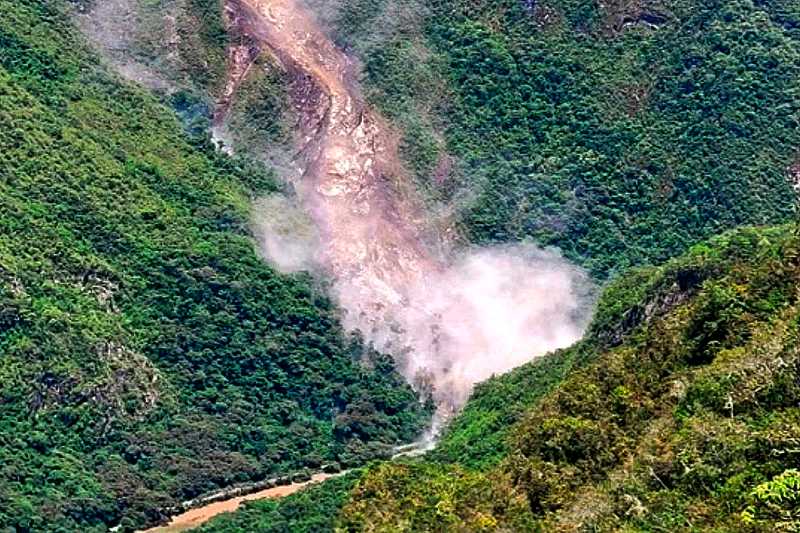
Landslides near Machu Picchu
Questions and answers about protests in Machu Picchu
1) Can social protests occur in Machu Picchu?
Yes, protests can occur in Peru for various reasons mainly due to corruption, unemployment and citizen insecurity.
2) What are the most common social protests in Machu Picchu?
The most common cases of social protests in Machu Picchu are from teachers, workers, students, farmers and transporters.
3) Why does Machu Picchu close its doors in cases of social protests?
Machu Picchu closes its doors only in cases of radical social protests that endanger the welfare of tourists.
4) How to visit Machu Picchu in case of social protests?
You can visit Machu Picchu in cases of social protests by leaving earlier to the town of Aguas Calientes or leaving earlier before there are road blockades leading to Machu Picchu.
5) What to do if I booked a tour and there are social protests?
If you booked a tour to Machu Picchu, contact your tour agency. Usually, agencies organize early morning departures, when there are no road blockades. If the protests are very hostile, they can arrange a change of tour date or cancellation with a full or partial refund of the cost of the service.
6) In what other cases can Machu Picchu close its doors?
Machu Picchu can also close its gates in cases of landslides, rock falls or river flooding. An unexpected case also occurred in 2020 due to the Covid 19 pandemic.
7) How to visit Machu Picchu more safely in case of protests?
If you are looking for more security on your trip to Machu Picchu you can also choose to leave a few days before your itinerary to the town of Aguas Calientes. This town is located only 10 kilometers from Machu Picchu so you will have no problem going up by bus or walking to the archaeological site.
8) Is Machu Picchu safe in cases of social protests?
Yes, Machu Picchu keeps its doors open if the protest is safe. In case of radical protests, the Inca city will close its gates to keep its visitors safe.
9) What days is Machu Picchu open?
Machu Picchu is open every day of the year, including holidays in Peru.
10) What was the longest closure to tourists in Machu Picchu?
The longest closure lasted more than 1 year in 2020 due to the global pandemic caused by Covid 19.
Advice from people who have been there
 By: Juan T.
By: Juan T.“Incredible experience“
“I'm not very good at describing my experiences, but I think it's enough to say that it was an amazing one. It is a truly amazing place, every single corner of it is worth every minute you spend - of the limited time -, although I also think the train tickets are a bit expensive.“
By Ticket Machu Picchu – Last updated, November 14, 2024
